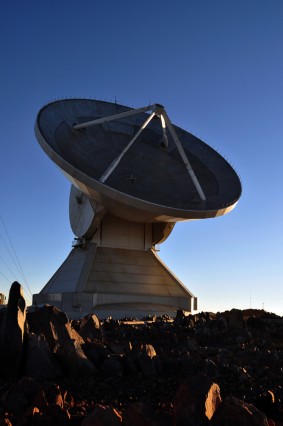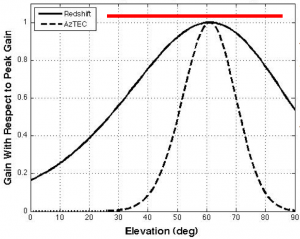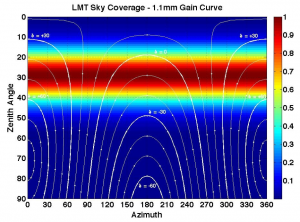
In the spring of 2013 the LMT will conduct its first season of scientific observations. This Early Science phase will consist of shared-risk observations using the 3 mm wide-band spectrograph (73-111 GHz) Redshift Search Receiver (RSR) and the 1.1 mm (273 GHz) continuum camera AzTEC. Both instruments have previously been successfully commissioned at different telescope […]
In the spring of 2013 the LMT will conduct its first season of scientific observations. This Early Science phase will consist of shared-risk observations using the 3 mm wide-band spectrograph (73-111 GHz) Redshift Search Receiver (RSR) and the 1.1 mm (273 GHz) continuum camera AzTEC. Both instruments have previously been successfully commissioned at different telescope facilities (FCRAO 14m, JCMT, ASTE), producing numerous scientific papers, and both instruments were also installed and tested on the LMT during the First Light observations in 2011.
A online submission form has been released and is now available to register and upload the LMT Early Science proposals.
All interested applicants for LMT Early Science observations should read the Announcement of Opportunity that contains information regarding guidelines for proposers, including the selection criteria for approved projects, and the composition of Scientific Project Teams.
LMT Early Science Announcement of Opportunity
The first call for Early Science projects is made with the understanding that all successful proposals and scheduled observations are considered as “shared-risk”. During this first period of scientific observations the LMT user-community should be aware that the feasibility of the proposed observations may change due to differences in the instrument sensitivities and the efficiency of the telescope performance compared to those that are advertised in this call. Early Science observations may be rescheduled or cancelled according to the need for additional commissioning and engineering activities.
A simple online form has been released and is now available to register and upload the Early Science proposals. Information regarding the proposal title, abstract, principal investigator and co-investigators, contact details, instrument selection, targets etc will be entered directly into the online form. The scientific and technical justifications (including figures, tables and references) will be uploaded as a separate document.
The observing proposals for the Early Science with the LMT must be written in English. The proposal must be printable on Letter paper and with a font size not smaller than 11 points, and all margins must be at least 2cm. A total of two pages are available for the scientific and technical justifications. Two additional pages are available for figures and tables. References should be printed separately on a fifth page, together with a summary of the composition of the Scientific Project Team, including relevant experience, responsibilities, and the role of external (non-LMT partners) co-investigators. The full proposal (not exceeding a total of 5 pages) will be uploaded as a single PDF document.
Further details on the submission of LMT Early Science proposals are included with the online form. An email will be sent to the P.I. to confirm the submission of the proposal.
A preliminary value of 85 microns r.m.s. is calculated for the total optical error budget, derived from measured imperfections in the optics of the primary and secondary mirrors, plus estimates of the impact of environmental effects (wind loading and temperature gradients in the antenna support structure) on the primary surface. This estimated error of 85 microns r.m.s. is used in the determination of the expected sensitivities of the Redshift Search Receiver and AzTEC during the first Early Science opportunity with the LMT.
The primary telescope reflector has been set at an elevation angle of 61 degrees. Given the passive primary surface, during the Early Science phase, and hence the inability to actively correct the induced gravitational deformations as the telescope surface moves in elevation, the gain of the telescope will have an elevation dependence that should taken into account when estimating the feasibility of the scientific proposals.

Fig.1 Gain variation as a function of elevation angle for observations at 3mm (RSR) and 1.1mm (AzTEC).
The predicted variations in gain, with respect to the surface setting angle of 61 degrees are provided for observations at 3mm and at 1mm in Figure 1. It is therefore strongly recommended that the selected targets are restricted to sources that pass through an elevation range of 25 to 85 degs at 3mm and 51 to 71 degs at 1mm for night-time observations (9pm to 7am) during the scheduled observing period (1st May to July 17th 2013). Figures 2 and 3 are presented to assist in target selection.

Fig.2 Telescope gain (color coded) at 1.1 mm as a function of zenith angle and azimuth. White curves show the individual tracks of targets with different source declinations, and white points indicate 2hr intervals in their hour-angle.